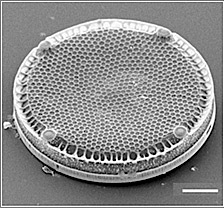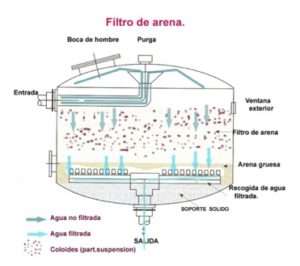The filter is one of the critical elements regarding pool water’s clarity, as the water goes into the filter, the filter matrix traps particles that cloud the water. This, of course, if the filter conditions are right.
In the following article we unfold some keys for better understanding on how water filtration happens
1) Most filters are sand (silica sand). However, there are other types of filters. We highlight two types.

a. Cartridges are very common in prefabricated pools, American influence. the filter matrix as the synthetic fibers are polyester or cellulose. When the cartridge is saturated, it is removed and pressurized wash.
b. Diatoms are a class of microscopic unicellular algae. Their cell wall is porous silica and is used as a natural water filtering sieve.
Filters can also combine two matrices (eg. Arena flint and charcoal) for a particular use.
2) Sand filters use various forces to trap substances suspended in the pool water.
a. Mechanical entrapment, a sieve effect, particles larger than the pore size which leaves the sand gets trapped.
b. Adsorption chemical substances that adhere to the sand, weak bonds or electrostatic charges.
c. Sedimentation. Sediment particles in the water because they lose speed collisions with grains of sand.

3) The filtration rate is crucial for the filter to do its job well. So if the pump has a higher flow rate indicated, the water will pass through the filter too quickly and the effect of sedimentation will be minimized. In most optimal filters filtration speed of 20-30 m / s is established
4) The direction of the water during filtration is upside down, that is, the water from the pool enters the upper part, passes through the filter, suspended substances are trapped by some of the forces discussed above and the water leaves the filter with fewer substances.

5) Filter pressure is increased as the suspended particles in the water are trapped in the matrix. When the gauge indicates that it is outside the range of optimum operation is necessary to make a backwash. In this case, the water enters the bottom of the filter and is dewatered, and doing so at a speed higher than the filter (35 to 50m / h). This water rich in suspended particles is discarded.
During backwashing the sand is fluidized matrix, that is, lose the sand grains are not established and hence, the filter does not retain particles. Backwash 5 minutes is usually sufficient to return the filter to its normal working pressure.
6) The rinse water is passed in the same direction of filtration, but discarding the water, in order to restore the structure of the matrix of silica sand (typical pore diameter and a stable disposition). Usually sufficient rinse 2 min.
7) Flocculation. The flocculants are metal salts are added to water in order to bind, by electrostatic forces, to the dissolved particles pool muddy. Thus floc or clot, of the binding of these particles, which will be trapped in the filter.
It is very important to adjust the dose of flocculant, because, in excess, the flocculant has the opposite effect, and muddies the pool.
HS Consulting Team

 English
English
 Português
Português  Português
Português 